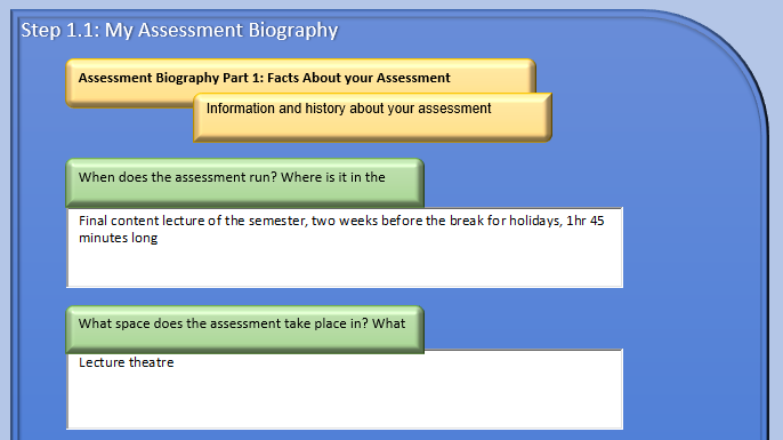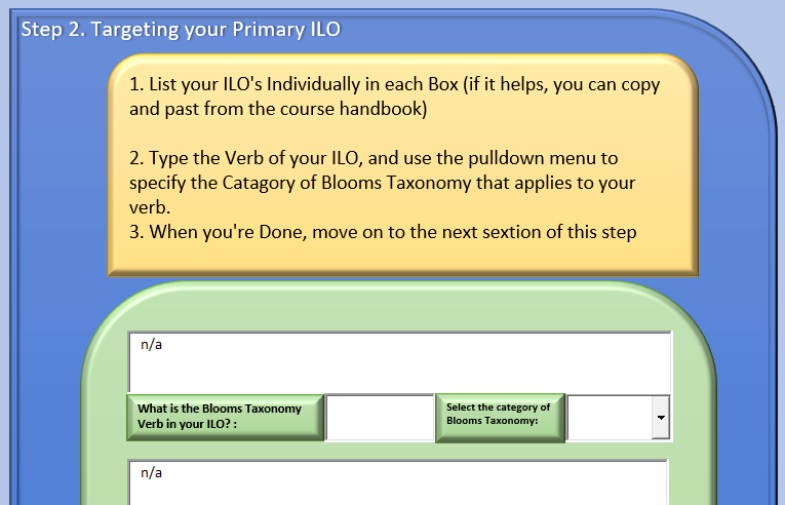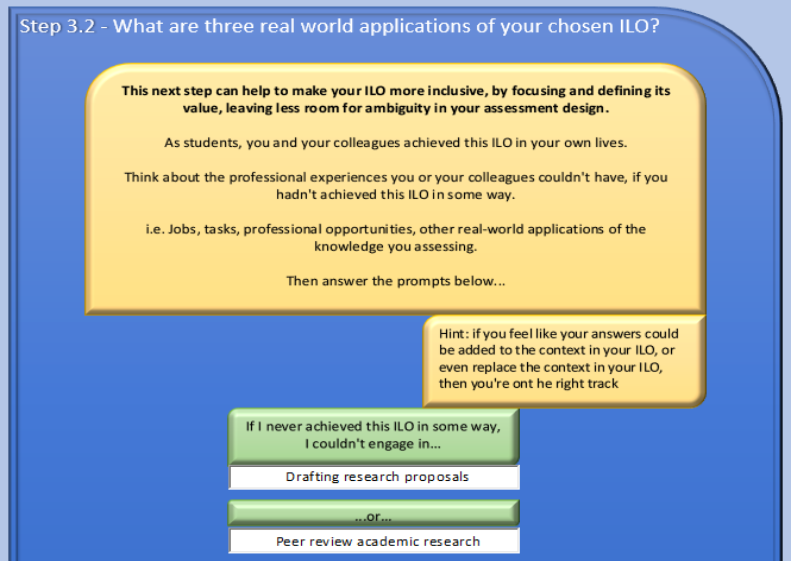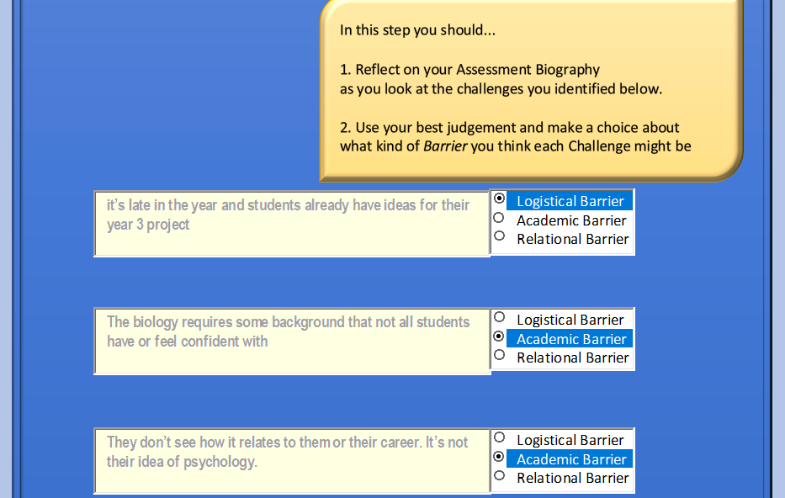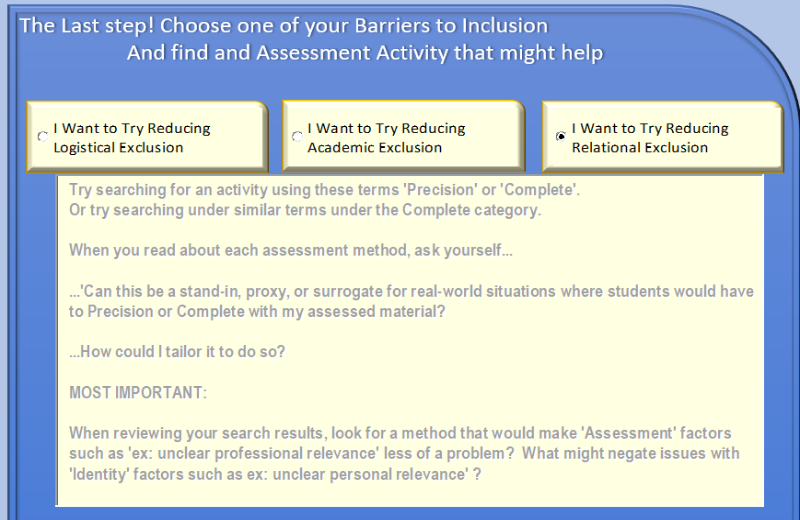Inclusive Constructive Alignment
The goal of inclusive constructive alignment (ICA) is to make the learning experience more inclusive and effective from a pedagogical point of view. Rather than provide a tick-box approach to inclusivity, the ICA provides a step-by-step application of constructive alignment, which focuses on the aspects of social-constructivist theory that have clear implications for the relationship between learning and a sense of belonging. This relationship in informed by various research fields, including applied psychology, sociology, and neuroscience. In this resource, you’ll find a Powerpoint Presentation, which should serve a guide to the ICA design method, allowing you to redesign assessments to reduce barriers to inclusion. This resource contains brief descriptions of each stage of the method on a conceptual level, and practical exemplars. This resource also contains prompts and materials that will help you complete each stage of the design process.
You will also find an Application that will take you through the ICA process step by step. You can start redesigning your assessment to make it more constructively aligned and inclusive now! All you need is Microsoft Excel.
Step 1 - Assessment Biography
15 - 20 minutes
This step is all about capturing information, student experience, and your experience. Specifically, capturing the information and observations that have been shown to be relevant to matters of inclusivity according.
Choose one of your own assessments to redesign (ideally, this will be the assessment you work on throughout the course’s design activities).
Your responses should reflect student feedback where possible, but you can also answer from memory.
Step 2 - Targeting your Primary Intended Learning Outcome's (ILO's)
15 minutes
This step is all about making it as easy as possible to redesign your assessment for inclusivity, by helping you target the part of your assessment design where even the smallest changes are more likely to make the biggest difference.
In this step you will need to outline your ILO's and reflect on which of them are the most challenging and why.
Step 3 - Deconstructing your Intended Learning Outcomes
10 - 15 minutes
This step is all about reducing the effects of the hidden curriculum and unconscious bias on your assessment design, by filling in the gaps left by constructive alignment as its conventionally practiced. Here you’ll add increased objectivity in your constructive alignment, and develop inclusivity through the principles of meaningful assessment, all using your professional experiences and the experiences of your colleagues as a starting point.
This step will help to make your ILO more inclusive, by focusing and defining its value, leaving less room for ambiguity in your assessment design.
Step 4 - Identifying your Barriers to Engagement
10 - 15 minutes
This step is all about using the work you’ve done so far to make informed decisions about the kinds of barriers to inclusion that might be occurring in your assessment, and the ways they might be impacting learning and performance.
The Challenges you identified in the last step are all possible Barriers to Engagement. They can also be Barriers to Inclusivity.
In this step you will reflect on your Assessment Biography and sort exemplar challenges into the 3 barrier groups.
Step 5 - Finding your Assessment Activity
5 minutes - 1 hour (depending on how much fun you're having)
Now you have created all the search criteria you need to start looking for an assessment activity. This is where you bring it all together and start having ideas.
In this step, you will find an assessment activity that can help you make your assessment more inclusive, using our custom-built Assessment Method Search Engine.
Simply select a Barrier to Inclusion at the top, and the app will immediately display all the relevant decisions and observations that you’ve made thus far – helping you focus on what to look for, and making it easier to decide which assessment method is right for you, your students, and your unique situation.


